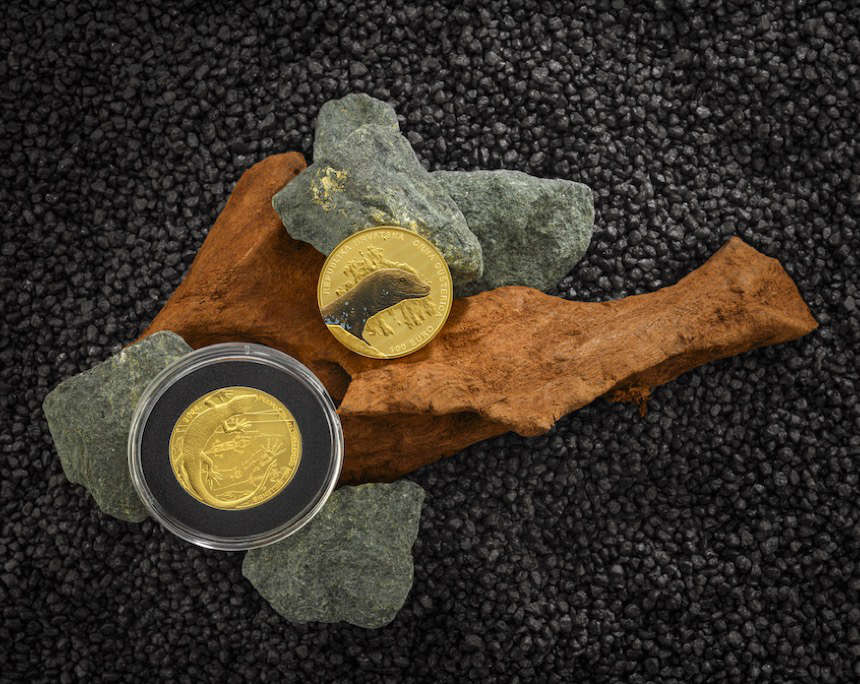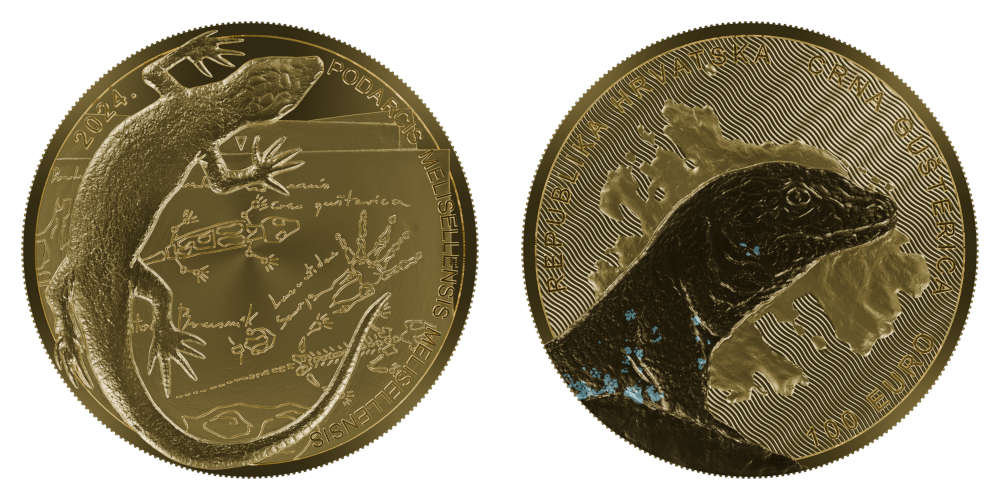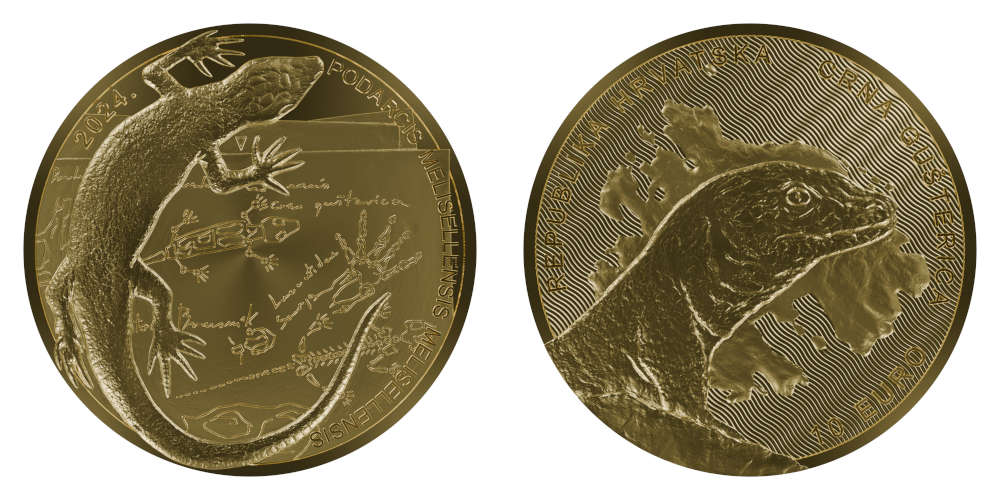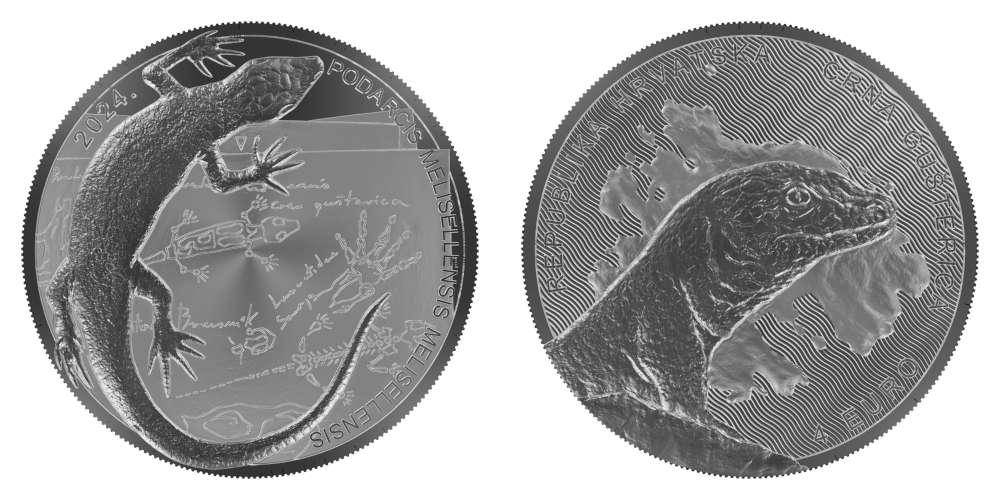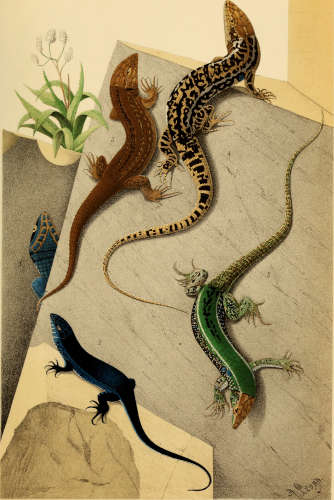Black Lizard: The Second Issue of the Autochthonous Croatia Series
On 14 March 2024, the Croatian National Bank issued three new collector coins in collaboration with the Croatian Mint: a €100 gold coin, a €10 small gold coin and a €4 silver coin. They are all part of the Autochthonous Croatia series and pay tribute to a particular subspecies of the Dalmatian wall lizard, Podarcis melisellensis melisellensis. With its striking turquoise spots, this black lizard is a perfect example of the fact that natural selection can not only be witnessed on the Galápagos Islands. Similar conditions prevail on Croatia’s islands, resulting in a myriad of species of the Dalmatian wall lizard.
Content
The Island of Brusnik and Its Unique Lizards
During the last Ice Age, the sea did not yet separate the Croatian islands from the mainland. Croatia’s wildlife could move freely and spread over the whole area. This changed around 18,000 years ago. At that time, more than 1,000 small islands were created, which make Croatia such a fascinating place to visit. The plants and animals on these islands were rather isolated, which is why some subspecies developed in order to adapt to the special circumstances of their living environment. This resulted in the creation of species that can only be found on certain Croatian islands. One of them is the black lizard, Podarcis melisellensis melisellensis, which is native to the island of Brusnik.
Brusnik is a small, uninhabited island, which has been under conservation since 1951. Its black lava soil and the sparse vegetation are home to several endemic species. The spectacularly coloured lizard of Brusnik is the main character of the second issue in the Autochthonous Croatia series. The rather small animal – without its tail, its body measures only 5 to 6.5 cm – was first described by a zoologist in 1877.
A Biological Early Warning System
The fishermen of the neighbouring island of Vis, however, had known and used the small lizard for much longer. Before 1951, they liked to go to the rich fishing grounds of Brusnik, about 15 kilometres away as the crow flies. They took the black lizard sunbathing on the lava soil as an indicator of stable weather. When the lizards retreated to their hiding places, on the other hand, the weather was likely to change, and the fishermen would hurry back to the port of Vis.
The Design
All three commemorative coins feature the same design created by Nikola Vudrag. The obverse depicts the black lizard with its characteristic small scales from above. In the field are schematic drawings and handwritten notes, reminiscent of a notebook of the kind used by zoologists on expeditions in the 19th century to record their impressions. The circumscription reads PODARCIS MELISELLENSIS MELISELLENSIS 2024.
The reverse is inspired by the design of the first issue of the Autochthonous Croatia series: like Dalmatian Dog, Black Lizard depicts the head of the animal on a section of the map of Croatia; the Adriatic Sea is highlighted by fine, wavy lines. The circumscription reads REPUBLIKA HRVATSKA CRNA GUŠTERICA (= black lizard) 100 EURO or 10 or 4 EURO.
The lizard’s head on the obverse of the 100-euro gold coin is coloured, giving it a realistic appearance.
The attention to detail in transferring the design of the 32-mm and 38.61-mm gold and silver coins to the 1/16-ounce gold coin of only 15 mm in diameter, is highly remarkable.
Issue Date and Price
Anyone who wanted to obtain one of the coloured 100-euro gold issues had to be quick: after the launch on March 14, 2024, it only took a short time before for these gold coins were completely sold out. The 10-euro gold coins and the 4-euro silver coins can still be purchased directly from the Croatian Mint store at croatianmint.hr/en/trgovina/. Their price is adjusted on a daily basis, depending on the current silver price. Added to this is the VAT of the country the buyer has the coin shipped to.




